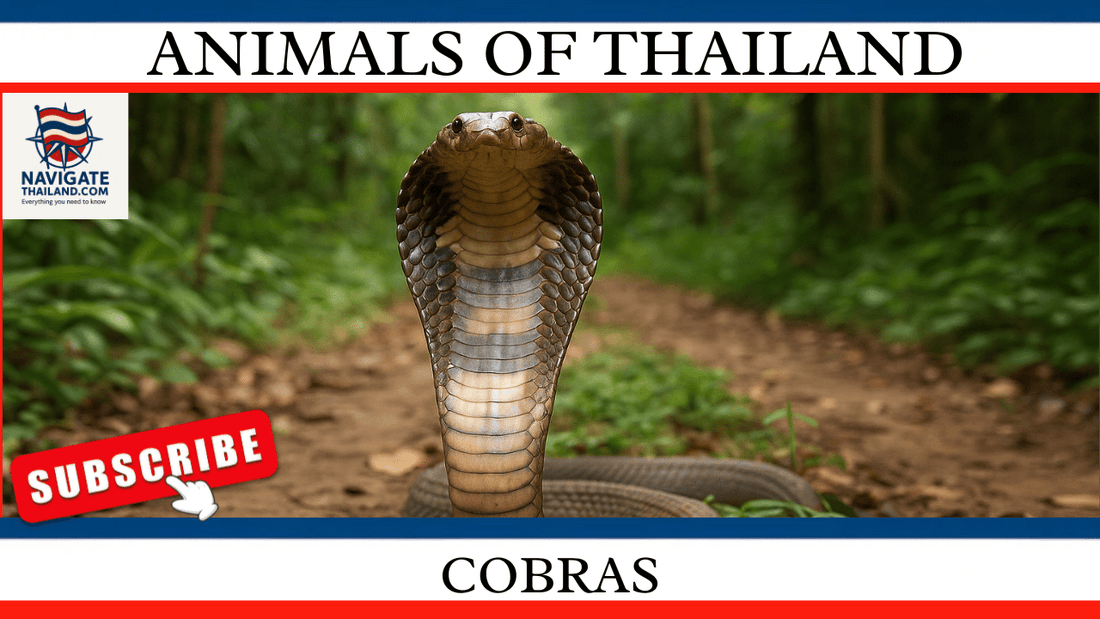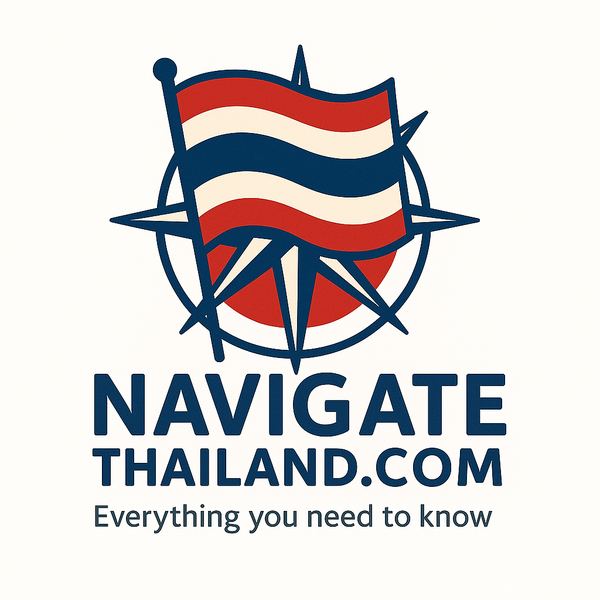
Cobras in Thailand: Everything you need to know about these fascinating yet dangerous creatures
Share
Cobras have long held a mysterious and captivating role in the natural and cultural history of Thailand. From their striking hooded appearance to their deadly venom, cobras are both feared and revered in this Southeast Asian country. Cobras are a common sight in Thailand’s tropical jungles and rural areas, and the country is home to several species of these iconic snakes. For centuries, they have been a part of local folklore, medicine, and even entertainment.
In this blog, we’ll explore the world of cobras in Thailand, covering everything from their identification and venom to their habitats, cultural significance, and the famous cobra shows. We’ll also highlight some fun facts and look at how cobras are farmed in Thailand.
Cobra Species in Thailand
Thailand is home to several species of cobra, each with its own unique characteristics and behaviours. These snakes are easily identified by their distinctive hoods, which they flare when threatened. The main species of cobras you’ll find in Thailand include:
1. Monocled Cobra (Naja kaouthia): One of the most common cobra species in Thailand, the monocled cobra is named for the circular “monocle-like” mark on the back of its hood. Their colour can range from yellowish-brown to black. Monocled cobras are widespread across Thailand, particularly in agricultural areas, forests, and near human settlements. They have highly potent venom containing neurotoxins and cardiotoxins that can cause respiratory failure.
2. Indochinese Spitting Cobra (Naja siamensis): Known for their ability to spit venom in a fine spray, these cobras are black or grey with light bands or speckles. While their venom is less deadly when injected through a bite, it can cause severe pain and temporary blindness if sprayed into the eyes. Found throughout Thailand, especially in lowland areas and near water sources, spitting cobras are common in agricultural lands.
3. King Cobra (Ophiophagus hannah): The king cobra, the largest venomous snake in the world, can grow up to 5.5 metres long. They have a relatively narrow hood and are usually olive-green, brown, or black with faint yellow bands. King cobra venom is primarily neurotoxic, causing paralysis and, in severe cases, death. Found in forests, bamboo thickets, and mangroves, the king cobra is known to prey on other snakes, including other venomous species.
4. Caspian Cobra (Naja oxiana): Though not commonly found in Thailand, the Caspian cobra may occasionally be encountered in the northern regions. They are typically greyish-brown with a slender body and less pronounced hood markings. Caspian cobras have highly neurotoxic venom and are one of the most dangerous cobra species.
Cobra Venom and Its Effects
Cobras are known for their powerful venom, which can be fatal to both their prey and humans. Cobra venom is primarily neurotoxic, meaning it attacks the nervous system, causing paralysis. Some species, such as the king cobra, also produce cardiotoxins that affect the heart, while spitting cobras produce cytotoxins that cause tissue damage.
In humans, cobra venom can lead to respiratory failure and death if not treated promptly. Neurotoxins block nerve signals to muscles, leading to paralysis, and in severe cases, this can affect the muscles responsible for breathing. Spitting cobras’ venom, if sprayed into the eyes, can cause extreme pain, inflammation, and, in the worst cases, blindness.
Despite the dangerous effects of cobra venom, treatment with antivenom is highly effective if administered quickly. The development of antivenom has significantly reduced the mortality rate of cobra bites in Thailand.
Cobra-Related Deaths in Thailand
Each year, around 7,000 to 8,000 snake bites are reported in Thailand, with venomous snakes, including cobras, responsible for approximately 30 to 50 deaths annually. Most cobra-related deaths occur in rural areas, where people working in agriculture come into contact with these snakes in their natural habitat. Quick medical intervention and access to antivenom have helped lower the number of fatalities in recent years.
Where Cobras Are Found in Thailand
Cobras in Thailand are found across various habitats, including forests, grasslands, agricultural areas, and even near human settlements. They are more active during the rainy season when food sources are abundant.
• Monocled cobras are common in rice fields, plantations, and rural areas throughout the country.
• King cobras prefer forested areas and dense vegetation but can also be found near water sources like rivers and swamps.
• Spitting cobras are typically found in open fields and agricultural lands, where they often hide in burrows or under rocks during the day.
What Do Cobras Eat?
Cobras are carnivorous, feeding on a variety of small mammals, birds, reptiles, and amphibians. Their diet depends on the species:
• Monocled cobras feed on small mammals like rats, as well as birds and frogs.
• King cobras have a unique diet, feeding almost exclusively on other snakes, including pythons and even other cobras. In times of scarcity, king cobras have been known to eat venomous snakes like kraits.
• Spitting cobras primarily consume rodents, birds, and lizards.
Snake Shows and Kissing Cobras: A Unique Tradition
Thailand is famous for its snake shows, where skilled snake handlers perform daring stunts with cobras, such as handling them bare-handed or provoking them to strike. One of the most popular attractions during these shows is the act of “kissing” a cobra, where the handler gently places their lips on the cobra’s head or hood. While these acts may seem perilous, the handlers have typically spent years mastering the art of reading the cobra’s behaviour.
These shows, especially popular in tourist areas, serve as both entertainment and a cultural tradition, showcasing the deep respect and fascination the Thai people have for cobras. However, they are not without risk, as there have been incidents of snake bites during performances.
In northeastern Thailand, the village of Ban Khok Sa-Nga is famous for its cobra shows, earning it the nickname “The Cobra Village.”
Cobras in Thai Medicine and Culture
Cobras have held significant cultural and medicinal importance in Thailand for centuries. In traditional medicine, cobra venom is believed to have healing properties and is used in small quantities to treat ailments such as arthritis and chronic pain. Additionally, cobra meat is sometimes consumed, with some believing it can boost vitality and improve overall health.
Cobras are also farmed in Thailand, primarily for their venom. This venom is collected and used in the production of antivenom, which is crucial for treating snakebite victims. Cobra farms serve both medicinal purposes and contribute to research on venom and its applications.
Spitting Cobras and King Cobras: Special Mentions
Spitting cobras, such as the Indochinese spitting cobra, are unique in their ability to eject venom at potential threats. They can accurately spit venom up to 2-3 metres, often aiming for the eyes of predators or humans. This venom causes intense pain and can lead to temporary or permanent blindness if not treated promptly.
The king cobra, the largest venomous snake in the world, deserves a special mention not only for its size but also for its unique role in the ecosystem. King cobras primarily eat other snakes, including other venomous species, making them both a predator and a controller of other snake populations.
Despite their deadly venom, king cobras are known for being relatively shy and non-aggressive, often retreating when threatened unless provoked.
Fun Facts About Cobras in Thailand
• King cobras can live up to 20 years in the wild.
• Cobra meat is considered a delicacy in some parts of Thailand, with some believing it has medicinal properties.
• Cobras can survive for months without food by relying on stored energy.
• The king cobra’s scientific name, “Ophiophagus,” means “snake-eater” in Greek, referring to its diet of other snakes.
Conclusion
Cobras in Thailand are fascinating creatures, deeply intertwined with the country’s natural and cultural landscape. Whether feared for their venom or admired for their beauty and power, cobras remain an essential part of Thailand’s biodiversity and tradition. From the forests where they hunt to the cobra shows that captivate tourists, these snakes have earned their place as one of the most iconic animals in Thailand.
References:
1. National Geographic: Thailand’s Deadly Snakes
2. Snake Identification Guide: Cobras of Southeast Asia
3. Thai Snake Venom Research Centre: Venom and Antivenom Production
4. Bangkok Post: Snakebite Statistics in Thailand
5. The Cobra Show Village - Ban Khok Sa-Nga, Thailand
Read more of our Thailand blog series:
Thai Food Guide:Traditional Recipes and Street Eats
Everything Travellers Need to know
Thailand travel ebooks and language guides
Thailand Travel Apparel & Souvenir Gifts
Subscribe to our YouTube channel Navigate Thailand to see our most popular Thailand travel blogs turned into videos:
Navigate Thailand YouTube channel










































































































































